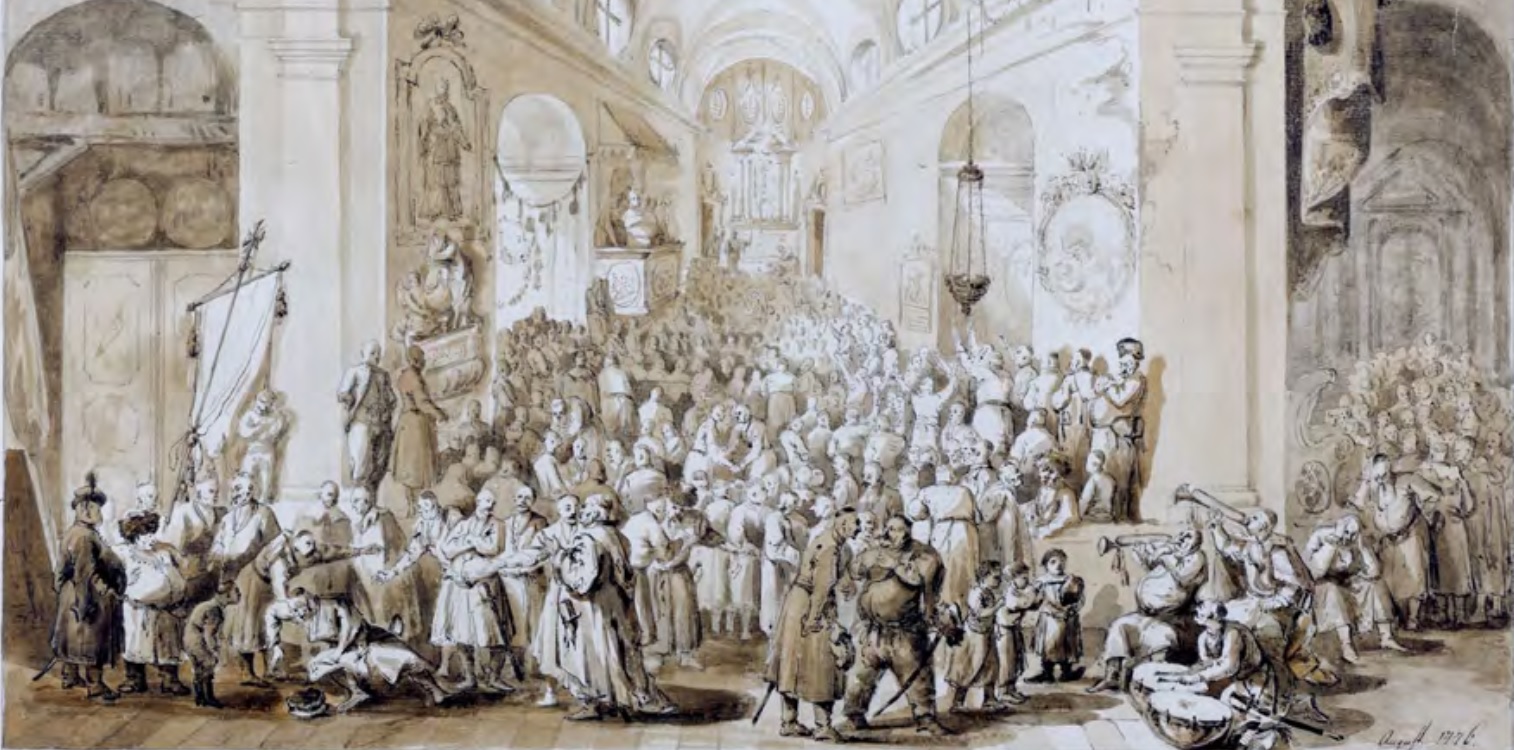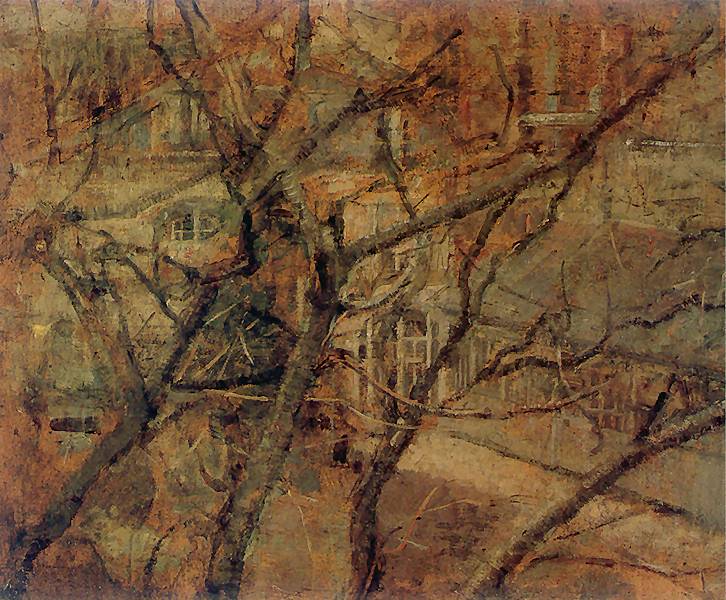One of the tasks of historians (at least those who have learned the principles of modern scientific techniques) is to search for sources, and to subject those already found to critical appraisal. However, won’t the resources of unknown documents be exhausted one day? Fortunately, not only is the number of documents increasing (and archives make them available over time, although reluctantly), but even in the case of ‘closed’ eras, such as early modernity, it is still possible to come across new materials, or even entire collections that have not yet been discovered. The reason for this is often the dispersion of the resource across many volumes and archives of numerous countries.
by Michał Zwierzykowski
We are dealing with a similar phenomenon in the case of the Polish-Lithuanian Commonwealth. One of the most interesting sources of its political history is the material left over from the activities of local sejmiks (assemblies of noblemen) from the 16th to the end of the 18th century, conventionally referred to as ‘sejmik records’ from 1932 on. To this day, they are searched for (and found) in archives, libraries, and sometimes in private collections in all the successor states of the former Polish-Lithuanian Commonwealth (besides Poland, in Lithuania, Belarus, Ukraine, Latvia and Estonia), and even in neighbouring countries having a close connection with the history of the Commonwealth: hence sejmik ‘polonica’ emerging in Russia, Germany, Austria, Sweden, or France.
Schools of practical politics
Sejmiks were of great importance for the functioning of the Polish-Lithuanian state. They played a multifaceted role: they are most often seen as an element of the state’s parliamentary system, and the basis of local self-government.
Adam Lityński, an outstanding researcher of these issues, once defined the sejmik as a legal institution with a set territory, gathering the nobility from that territory (representatives of the clergy and townspeople only in the roles of observers), which performed a number of different functions. Depending on the mode of convening a sejmik and the need behind it, the following assemblies existed: the pre-Sejm, relational, deputy (intended for election of higher Tribunal members), ecnonomic, extraordinary (convened by kings), electoral, as well as less formal assemblies, devoted to debates during court sessions or expeditions, and rallies aimed at reviewing local mass levies of conscripts.
The privilege of convening sejmiks belonged to the King, and – during the period of interregnum – to the primate. The nobility often circumvented this restriction by suspending (limiting) legally convened sessions, sometimes even a dozen times, while retaining the function of the marshal elected during the first assembly. As a result, local sejmiks were able to convene even many times a year, for deliberations lasting up to a week or more. This lasted until 1717, when the limits were finally banned.
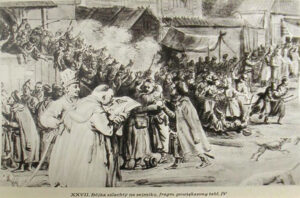
From county to voivodeship – building the state from below
According to calculations by Wojciech Kriegseisen, there were at least 68 particular sejmiks (gathering the nobility of two voivodeships, a single one, land or county) in the Commonwealth at various times – 44 in the Crown and 24 in the Grand Duchy of Lithuania. Besides, until the 17th century, there were a few general (provincial) sejmiks, where senators and deputies elected at particular sejmiks gathered before going to the Sejm. Most of them disappeared in favour of provincial sessions held during the Sejm, and only the general sejmik of Royal Prussia survived until the First Partition of Poland in 1772.
From the 16th century onwards, the role of sejmiks in the state system gradually grew. After 1572, they gained fiscal and military competences, and with them a growing political significance and influence on the course of the state’s destiny. Following Adolf Pawiński, the period from the mid-17th century to 1717 is commonly referred to as the time of ‘sejmik rule’, to emphasise the culminating role of these institutions. As they increased their treasury powers, the sejmiks increasingly expanded their structures. In consequence, they extended the solutions they introduced to the entire state – a sui generis way of building and reforming its structures from below, not always with beneficial consequences.
Sejmik activity resulting from participation in parliamentary life (electing members of the Sejm, drawing up instructions for them) meant that regularly convened parliamentary campaigns, elections, and the keen political activity of the nobility, were reflected in the materials reaching sejmiks and produced by them. Owing to the fact that these campaigns simultaneously covered the whole of the vast territory of the Commonwealth – including both the Crown and the Grand Duchy of Lithuania – studying and analysing the materials left behind makes it possible to study the nobility’s opinion on the issues that were most important for the central government and local communities. The growing competences and self-governing activity of sejmiks, often inseparable from and dependent on that of the parliament, meant that resolutions passed at sejmiks gave insight into many aspects of the life of local communities. Resolutions passed at sejmiks concerned not only the nobility, but also other social strata, religious communities, as well as cultural, economic and social matters. It is impossible to overestimate the wealth of information and research potential contained in the materials left after sejmiks of the past.

The race for documents
Sejmik sources were already known to historians in the mid-19th century, and it was then that the first steps were taken towards their partial use and publication. Paradoxically, Russian historians were the first to undertake this effort. Given that this was a time when Russia was one of the partitioning states, and the ‘historical argument’ was becoming increasingly important for the legitimacy of the government, one should not think that Russian researchers were motivated by a desire to learn about the entirety of sources and sejmiks. The interests of the Russian Empire were at stake, so historians published only sejmik records that were important from the perspective of St Petersburg (at that time collections of sejmik materials from the south-eastern borderlands of the former Polish-Lithuanian Commonwealth, as well as from several voivodeships of the Grand Duchy of Lithuania, were published in Kiev and Vilnius). These activities, however, also received a response from the Polish community of historians working during the period of the Partitions. The first to begin extensive work on collecting and compiling sejmik materials was Adolf Pawiński, to this day regarded as the ‘father of sejmik editing’. However, other researchers, who discovered the importance of this source, were of a similar opinion.
One of the first works devoted to this type of source was the modest editorial work by Franciszek Kluczycki (1887), which published resolutions (lauda) and instructions of the sejmik of the small Dobrzyń district on the border between Royal Prussia and Kuyavia. A year later, the previously mentioned Pawiński published his monumental work in five volumes (a monograph and four volumes of editions), covering lauda, and the instructions of a sejmik of two Kuyavian voivodeships. Already several years earlier this historian had embarked on an extensive programme of searching, copying and collecting transcripts of sejmik materials from the Crown (to this day we can use dozens of volumes of these manuscript copies at the Library of the Polish Academy of Learning and the Polish Academy of Sciences in Krakow). After a longer break at the beginning of the 20th century, historians from Lwów (Antoni Prochaska, and later also Wojciech Hejnosz) began to publish sejmik records of the Ruthenian Voivodeship. Finally, sources from the years 1572–1772 were published in several large volumes, and work began on the sejmik of the Bełz Voivodeship, which was abandoned after the Second World War.
A great breakthrough in publishing the written remains of historical sejmiks came with the publication of the first volume of sources from the Krakow Voivodeship, prepared by Stanisław Kutrzeba in 1932. This historian not only strongly supported the idea of the gradual publication of the materials of each sejmik, but also proposed the considerable broadening of the spectrum of sources to be included. He referred to them all for the first time by the term ‘sejmik records’, which is still in use today. However, the work of subsequent generations did not progress intensively, mainly due to the Second World War, huge losses of source material, as well as the political situation in communist-ruled Poland, which did not favour research on this type of sources produced by the nobility. These limitations were overcome only by Włodzimierz Dworzaczek (in the years 1957–1962, he began to publish sejmik records of the sejmik of Greater Poland in Środa for the years 1572–1632) and Adam Przyboś (in the years 1953–1984 he continued Kutrzeba’s work for the sejmik of Krakow for the years of 1621–1695). Their editions were of very high quality, following Kutrzeba’s assumptions. It was not until the beginning of the 21st century that a new chapter in sejmik editing began.
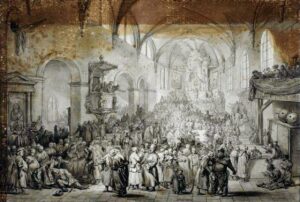
Speeches and protests
As a result of the work of historians publishing these sources after 1932, what is referred to as ‘sejmik records’ includes several categories of material. Above all – lauda and instructions, passed and written down by sejmiks. Among the instructions are not only those given to members of the Sejm, but also instructions for sejmik representatives sent to the King, primate, chancellor, hetmans and others, in order to present and settle matters important for the voivodeships. In many cases it is also possible to find replies to deputations sent by sejmiks.
Another group are universals issued by the King, the primate, sejmik marshals, sejmik officials, and others. These are both universals convening sessions of the Sejm and sejmiks, as well as official ones, issued for political or procedural purposes.
A significant part of the published material is correspondence. It includes letters written by the King, the primate, officials, and senators to sejmiks, as well as letters exchanged between sejmiks and addressed to various parties. Letters were frequently addressed not to one but to many sejmiks simultaneously, sometimes to all of them, both in the Crown and in Lithuania. The materials in this category best depict that sejmik records can be an excellent source for the study of political discourse in the broad sense, also in its practical dimension.
Most often preserved in collections of silvae rerum, or in the form of occasional prints issued after the sejmik, records of speeches delivered during or in connection with sejmiks constitute an important but rather rare sejmik source.
Today, numerous protestations and manifestos found in various books of castle or land courts and offices are also carefully taken into account. Particularly noteworthy are those breaking off the sejmik, presenting the political stance of the sejmik or political activists, as well as those providing information about extraordinary events or disturbances during sessions.
The printed texts also include numerous materials on the history of the sejmiks, such as accounts and information on their sessions, the political situation before and during them, or the circumstances around breaking off the sessions. Information about sejmiks usually comes from manuscript newspapers and, from 1729, from the printed Kurier Polski and Gazety Polskie for the years 1735–1736, and, above all, from private correspondence.
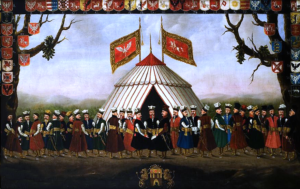
Hope in silvae rerum!
The biggest problem for publishers is the previously mentioned enormous dispersion of source material. The main sources, lauda, instructions, and many universals, manifestos and protestations are to be found in thousands of books of castle or land courts and offices, kept in various archives and libraries in Poland and abroad. Sejmik materials were rarely found there for the 16th and early 17th centuries, but can be traced in transcripts in many manuscript volumes. Assuming the variety of sejmik records, the search should also cover numerous sets and collections of private correspondence, cartularies with copies of various materials, silvae rerum, and collections of old prints. The situation becomes significantly more complicated for those sejmiks, from the territory of which books of castle or land courts and officesdid not survive (many were destroyed by fire, or as a result of the turmoil of war, as early as in the 17th and 18th centuries, but these materials suffered the greatest losses as a result of the deliberate actions of the German occupants, especially following the suppression of the 1944 Warsaw Rising). A potential publisher is not without chance, but the time needed for collecting remains, and the painstaking reconstruction of the history and records of such sejmiks is much longer. Many sejmik records were copied as early as in the 17th and 18th centuries, and were taken from books of castle or land courts and offices in the form of official extracts. We have information about many sejmiks in preserved diaries, memoirs or correspondence. The reconstruction method, which is necessary for sejmiks with a limited number of sources, is also helpful in reconstructing some sessions of sejmiks that are better documented in terms of sources. This obliges publishers to include in their editions references to assemblies held, of which we learn indirectly, or which were to have taken place by law.
The research for a single sejmik, often in a very narrow chronological framework, takes many years; if we add the time needed to read, transcribe, analyse, and prepare the sources found for printing, the editorial project for a single volume (counting from several hundred to over a thousand pages) may take even up to six or seven years. If the number of sejmiks and the state of preservation of their materials is taken into consideration, there is still enough work for several generations of historians. There is much hope for the future in the government support programme for the editing of historical sources entitled the National Programme for the Development of the Humanities.

